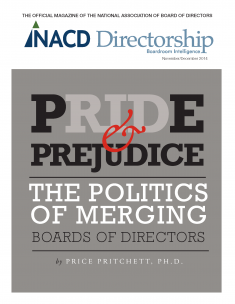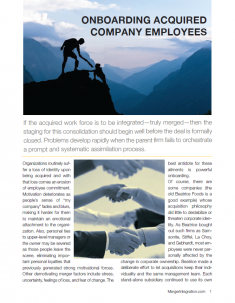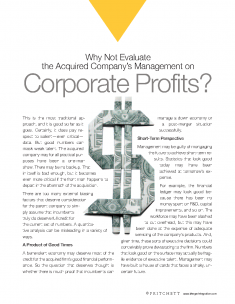7 Step Process to Designing Post-Merger Organization Structure
- Evaluate and, if necessary, refine the business strategy. Strategy should drive structure. Strategy should provide fact-based, clear, compelling, boundary-setting answers to these questions:
- What products/services will we offer and not offer?
- Which products/services will we emphasize?
- What markets will we and will we not serve?
- Which markets will we emphasize?
- What competitive advantage(s) will cause us to be successful?
- How will we measure our strategic performance?
- Identify the business processes that are most critical to the successful implementation of the strategy. Strategy and business processes should be the two primary drivers of structure. Business processes—the activity flows through which work gets done—must be supported by the structure.
- Define the characteristics of an organization structure that supports the strategy and the core processes. To ensure that the structure evaluation is comprehensive and that there is a framework for the debate, it is best to begin by developing a set of decision criteria, or objectives. These objectives enable you to compare strengths and weaknesses as you decide among alternative structures. In some cases, they are more effectively used as the specifications for your design of the best structure.
- Define other objectives to be met by the organization structure. In addition to supporting your strategy and core processes, you want your organization structure to serve other purposes. Your additional objectives may relate to administrative cost and people needs. In some cases, these selection criteria carry nearly as much weight as those related to strategy or business processes.
- Generate alternative organization designs. In this step, the options are described at a level of detail that enables them to be assessed against the decision criteria and compared to other options.
- Select the best organization structure. Since there is no universally correct structure, the purpose of Step 6 is to determine the organization design that is best for the unique needs of a business at a point in time. This step surfaces both the strengths and the weaknesses of each alternative structure. Shortcomings in the strongest candidates may be minimized or eliminated by modifying the design to incorporate aspects of the other alternatives.
- Develop and carry out a structure implementation plan. That plan should cover the waterfront of technical and human factors, interface with other projects and the other variables in your company’s performance model, and be carried out at an appropriate pace. A key element in the plan should be the definition of roles (outputs and standards) at all levels. Then, use project management and change management principles to steer it to success.
Steps 3 through 6 require sound decision-making. Step 7 requires strong project management.
When considering a new organizational design:
- Specifically define the issues (current problems, potential problems, opportunities) that are facing your business.
- Determine the degree to which structure, as opposed to other variables of performance, is causing the problems or could facilitate the realization of opportunities.
- Define department, team, and individual roles that enable the structure to take root.
Organization structure is important. It is where people live. However, it is purely a support system for your strategy and business processes. As such, it should be considered only after all performance variables have been assessed.
Self-Assessment Questions
- Does our organization structure support the product choices, market choices, and competitive advantage described in our strategy?
- Does our organization structure facilitate—or at least not impede—the flow of business processes that are most critical to the implementation of our strategy?
- Is our organization structure the result of going through a rigorous decision-making process?
When we implement a new organization structure, do we develop a plan that addresses both the technical and the human variables? Do we employ the same project management discipline that we do in other major change efforts?





